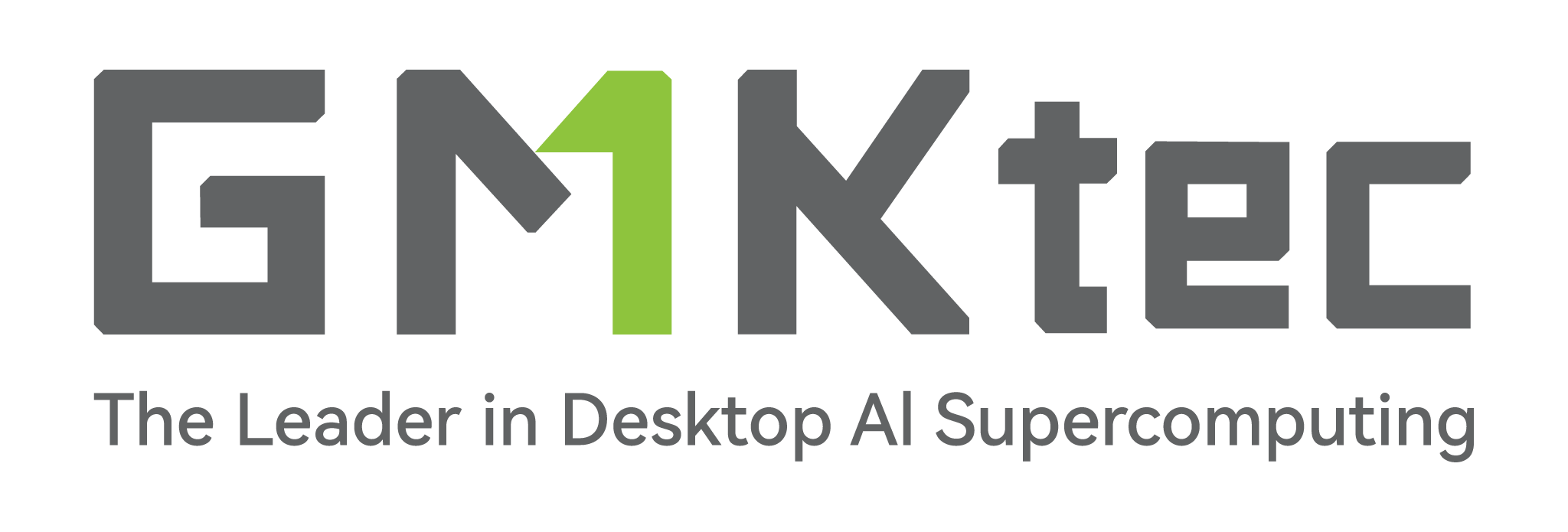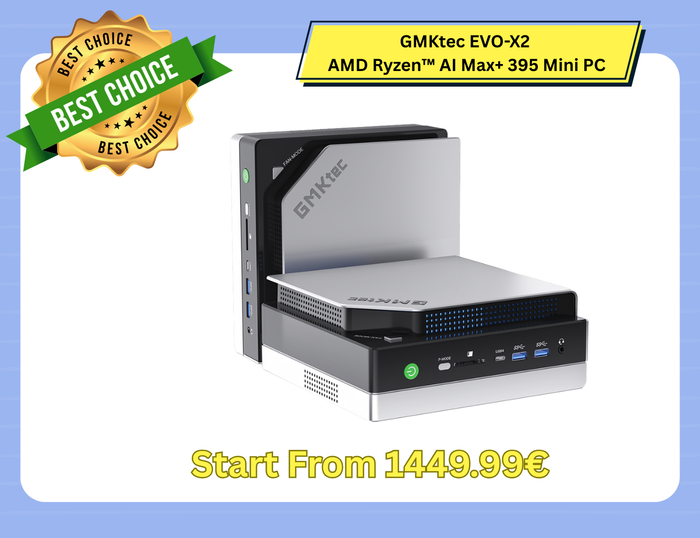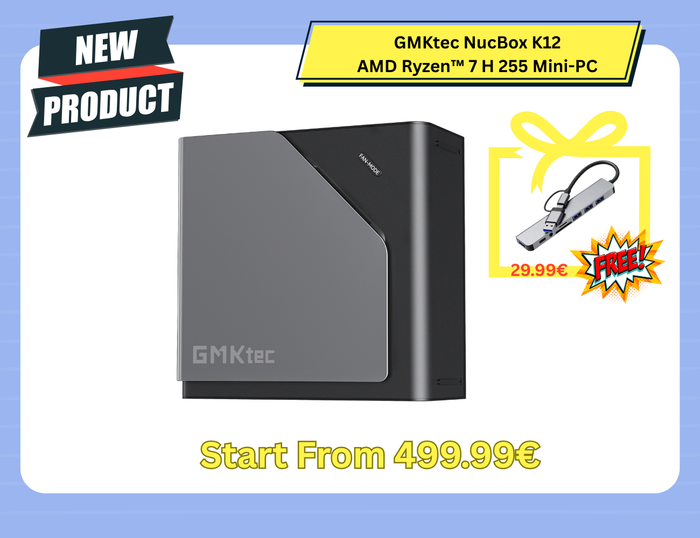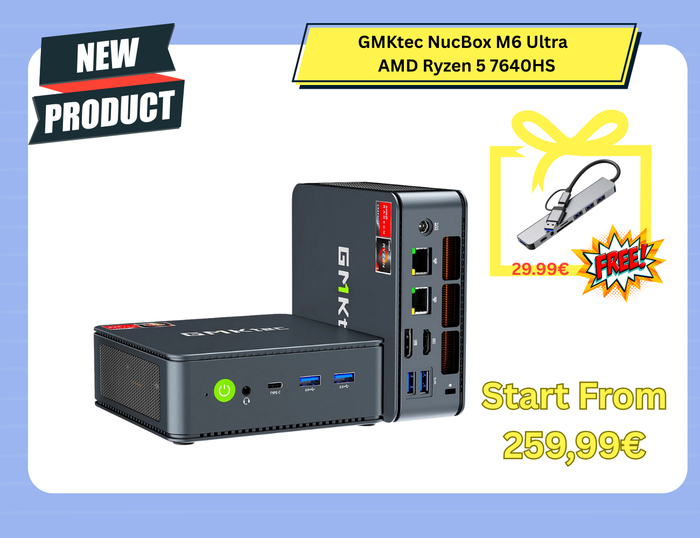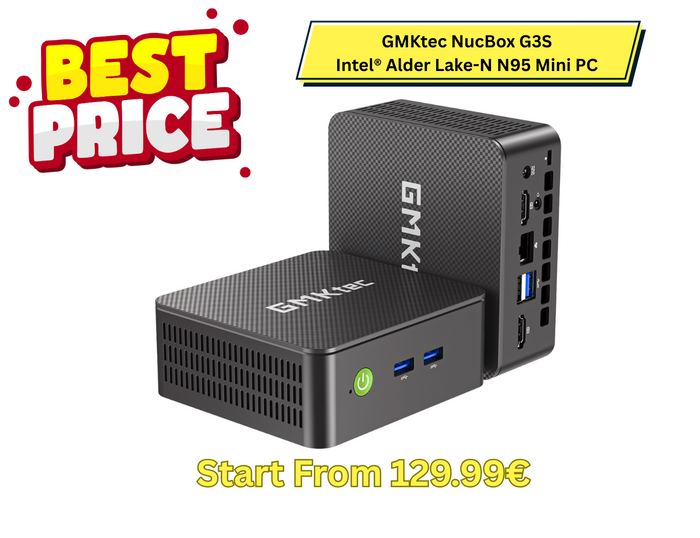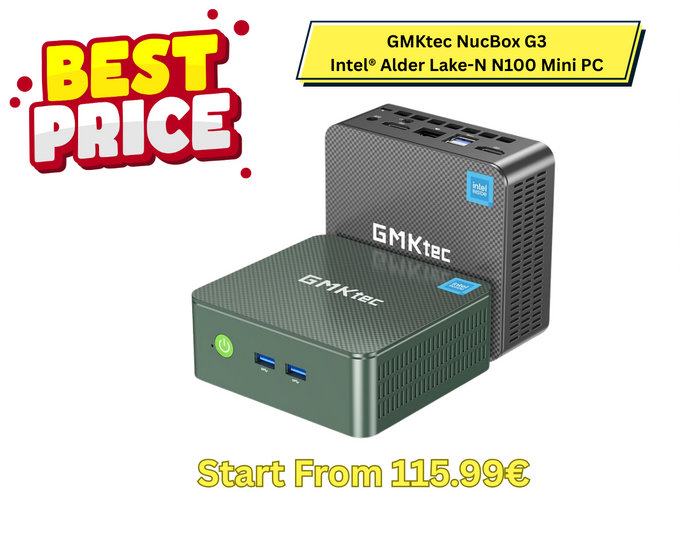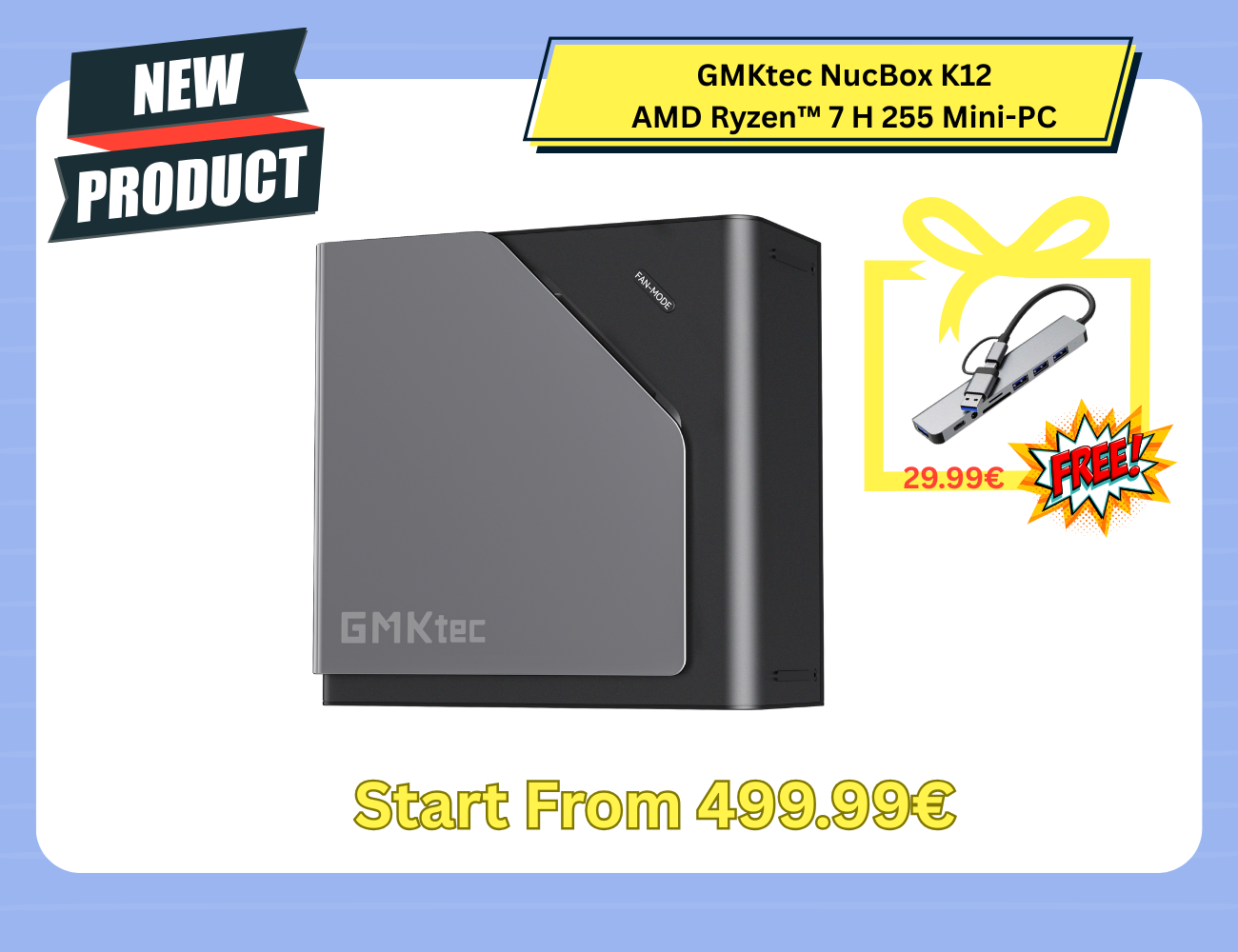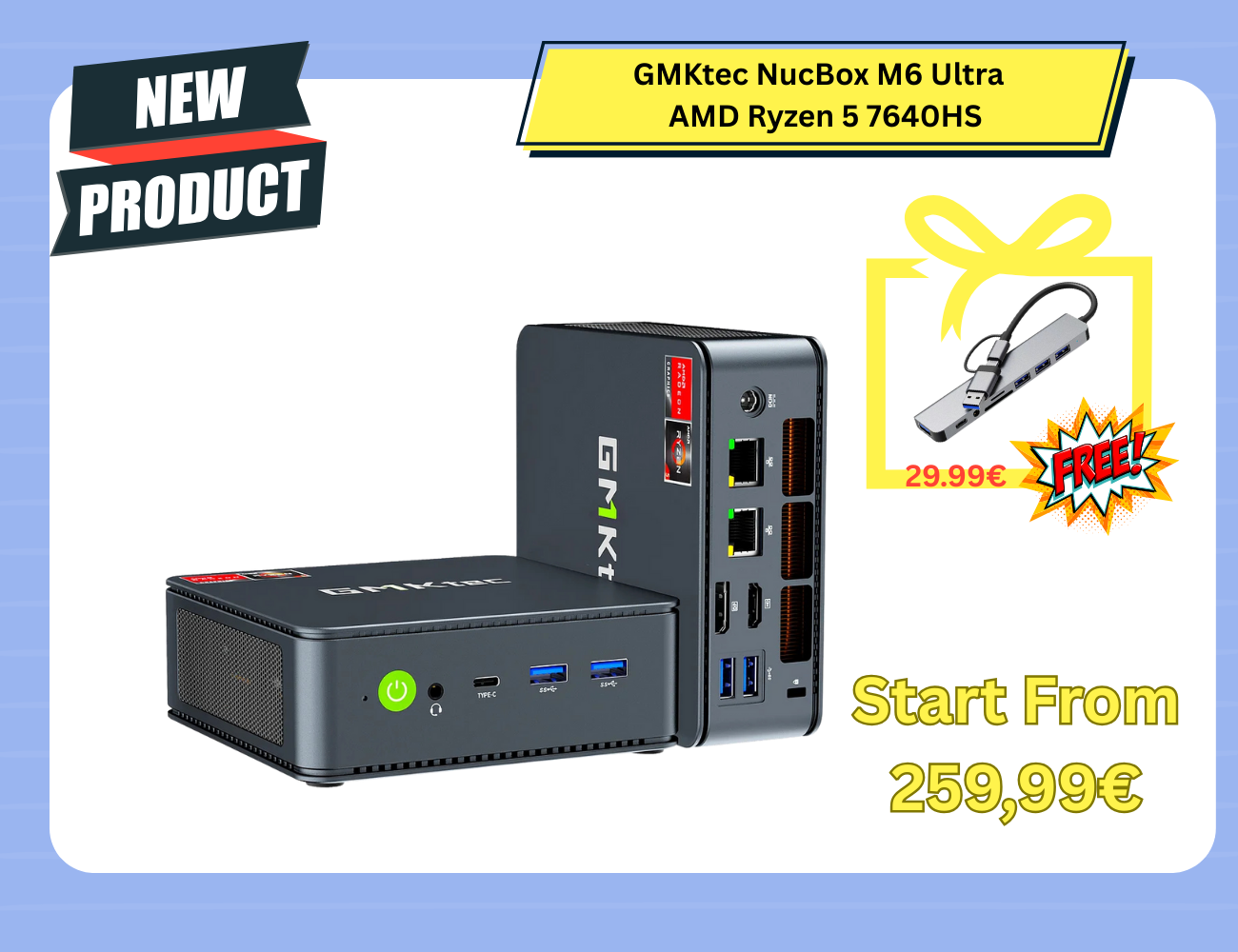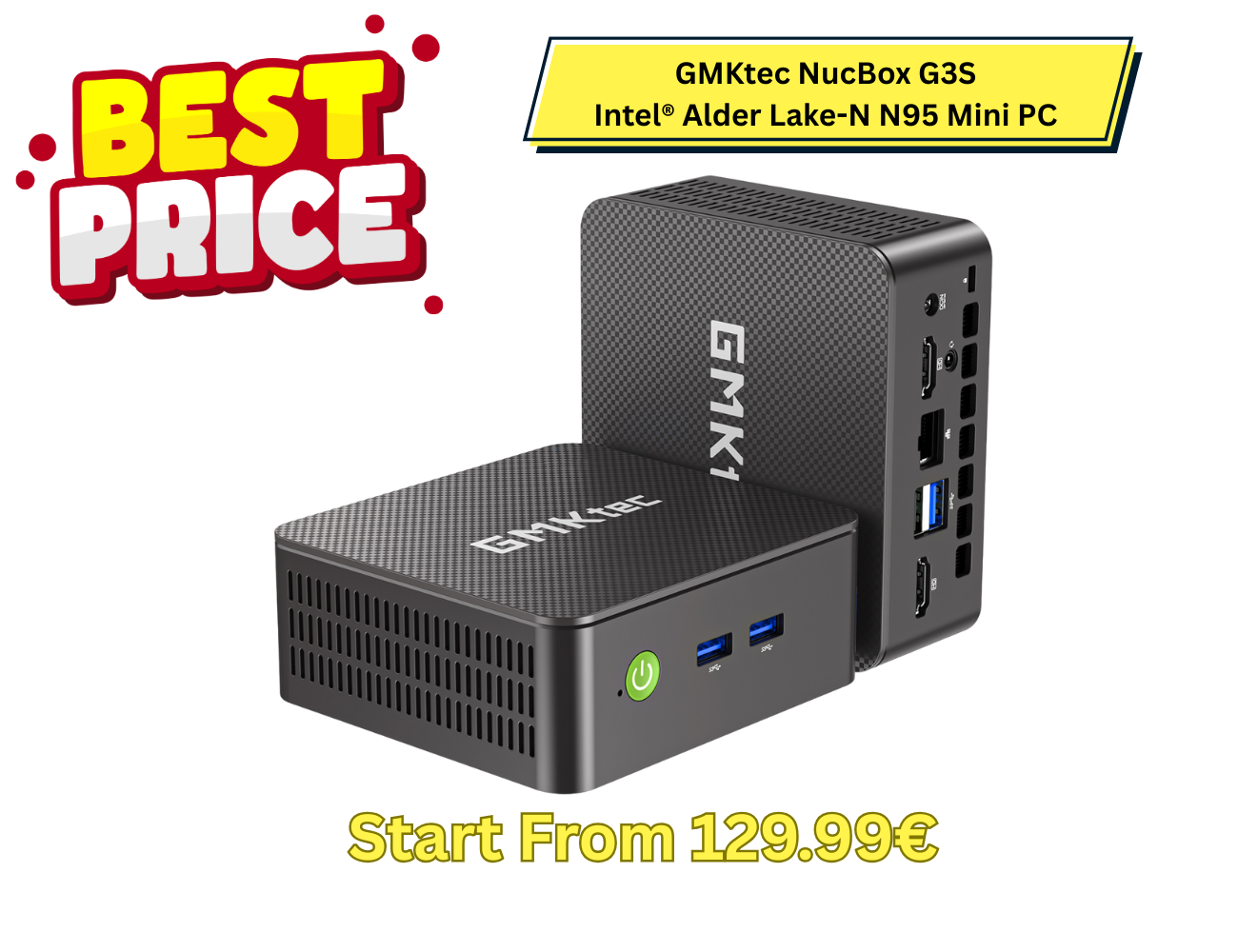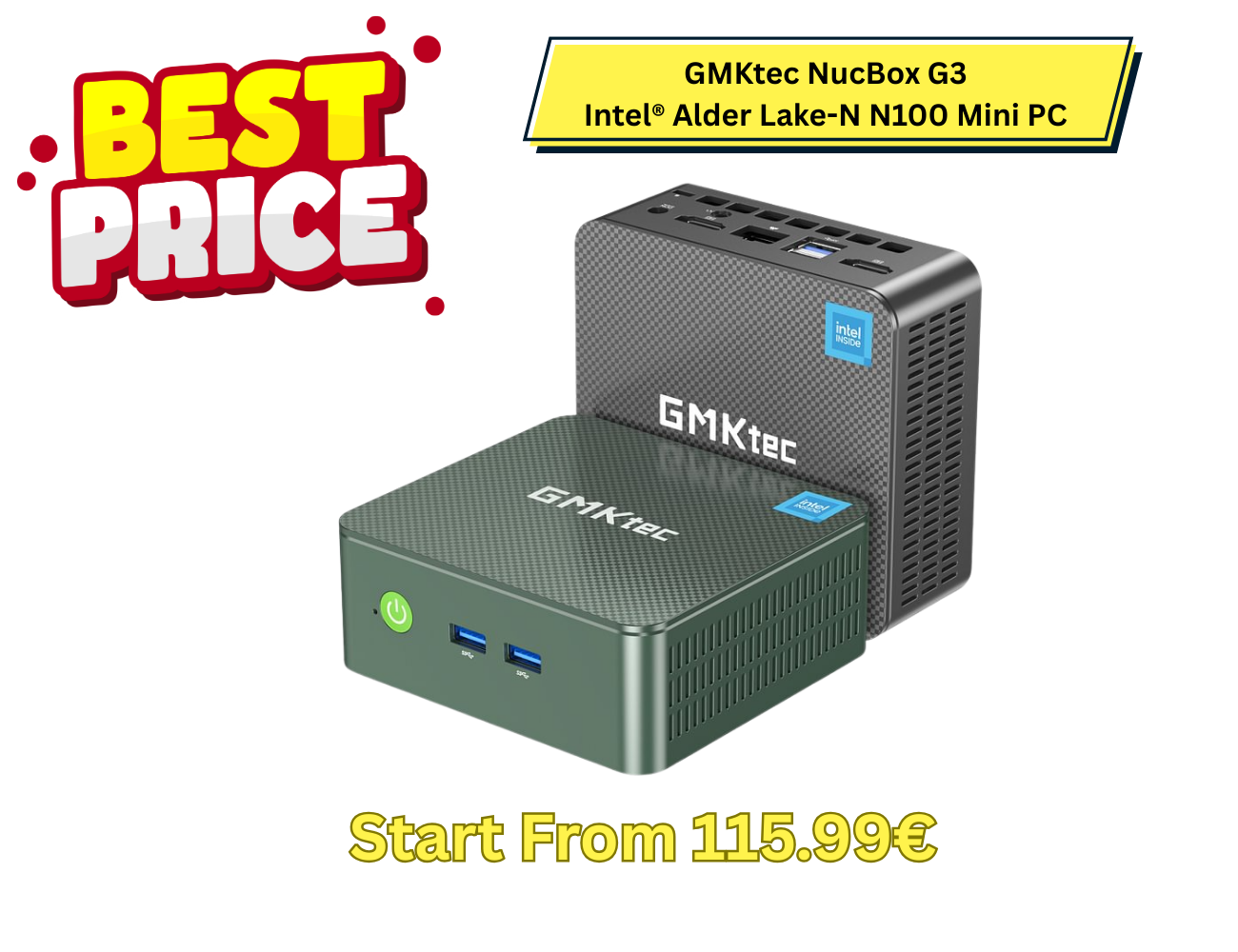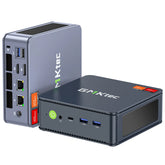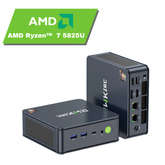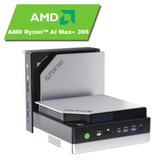High-End-Modell: AMD Ryzen AI MAX+ 395 im GMK EVO‑X2 — Der ultimative AI-Mini-PC
- Processor: Ryzen AI MAX+ 395
- RAM: 128 GB LPDDR5X @8000 MHz
- Storage: 2 TB PCIe 4.0 SSD
- Guide price: 1 999 €(on www.de.gmktec.com in the special offer 1 969 €)
At this year’s CES, AMD introduced the Ryzen AI MAX processor series, codenamed Strix Halo The flagship model, the Ryzen AI MAX+ 395, based on the Zen 5 architecture and offers 16 cores and 32 threads. Particularly noteworthy is the integrated GPU with 40 CUs based on the RDNA 3.5 architecture — the most powerful integrated graphics solution AMD has ever developed.
The processor supports up to 128GB LPDDR5X-8000 Unified Memory, of which up to 96 GB as dedicated video memory This makes it ideal for Loading and running large local AI models.
As a close technology partner of AMD, GMKtec already have a fully equipped mini PC with Ryzen AI MAX+ 395 and 128 GB RAM launched on the market — a real AI supercomputing desktop center in a compact formatSo let's take a look at what this AI powerhouse can really do.
The Ryzen AI MAX+ 395 — AMD's concentrated innovation power in one chip
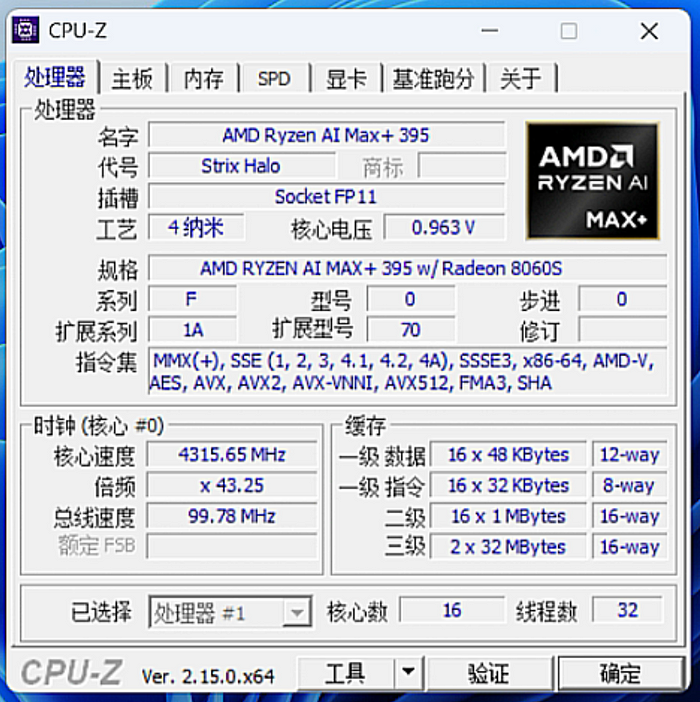
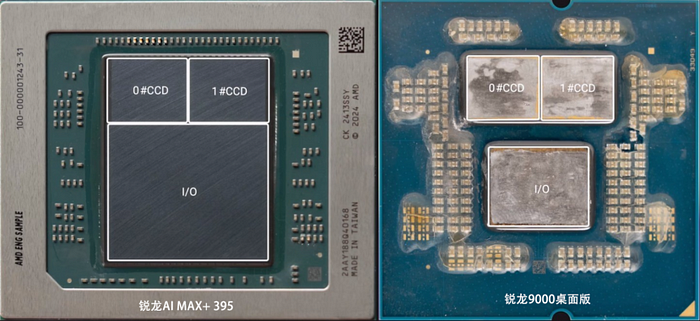
The Ryzen AI MAX+ 395 combines several of AMD’s cutting-edge technical developments.
First, the processor is based on the Zen 5 architecture and uses a 4nm dual-CCD design, closely related to the desktop Ryzen 9000 (improved D2D interfaces result in a slightly smaller overall footprint). It boasts a top-of-the-line specification with 16 cores and 32 threads, as well as a large three-level cache of 32 MB × 2 = 64 MB. The maximum boost clock speed is 5.1 GHz. Notably, the Ryzen AI MAX+ 395's two CCD chips are positioned directly next to the I/O die (IOD), while the desktop Ryzen 9000 has some separation between them. Theoretically, this can further reduce data latency.
Second, the IOD area of the Ryzen AI MAX+ 395 has grown to an impressive 307.58 mm², significantly larger than the Ryzen 9000 desktop IOD. This is due to the inclusion of the most powerful integrated graphics unit ever, the Radeon 8060.S, is integrated. The Radeon 8060S Based on the RDNA 3.5 architecture, it features 40 Compute Units (CUs), 32 MB of Infinity Cache, and eight 32-bit memory controllers with a total memory bandwidth of 256 bits. The IOD also includes a Neural Processing Unit (NPU) with 50 TOPS of performance, two Media Engines, and a Display Engine. Due to the Radeon 8060'sS With integrated performance comparable to common dedicated graphics cards, the Ryzen AI MAX+ 395 is considered by users to be the most powerful APU ever.
In addition, the Ryzen AI MAX+ 395 supports up to 128 GB of LPDDR5X 8000 unified memory, of which up to 96 GB can be used as dedicated graphics memory for the Radeon 8060S This allows for the local loading and execution of particularly large AI models — in this respect, it even outperforms an RTX 5090 with 32 GB of dedicated VRAM.
The official cTDP is flexible between 45 W and 120 W, depending on the requirements of the final product configuration.
Overall, the Ryzen AI MAX+ 395 is undoubtedly an extremely powerful solution for AI mini PCs and notebooks, easily handling both mainstream gaming and local AI applications.
Introducing the GMKtec EVO-X2
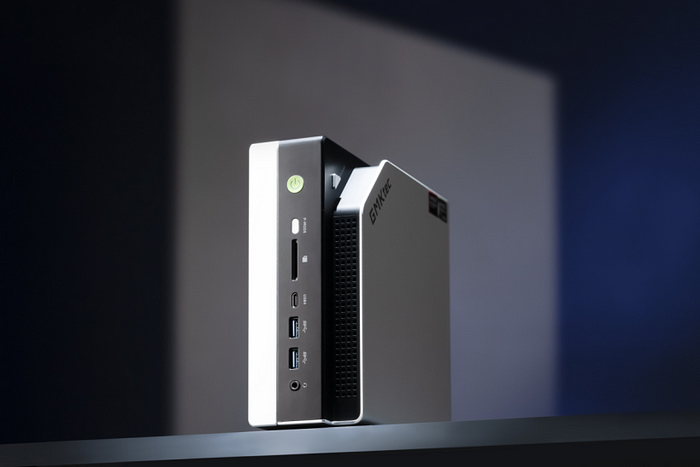
The GMKtec EVO-X2 is a mini PC designed as an AI supercomputing desktop center, boasting a futuristic design. The case is made of environmentally friendly, high-quality 1050 aluminum, which not only offers a premium feel and high stability, but also ensures a compact design with dimensions of 186 mm × 77 mm × 192 mm—a mini format with desktop performance.
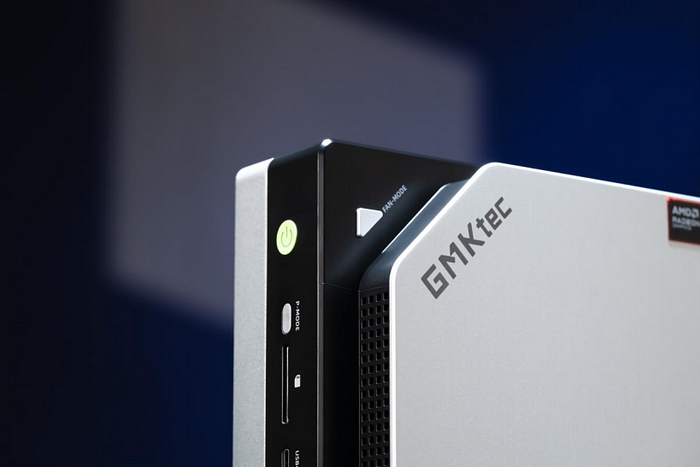
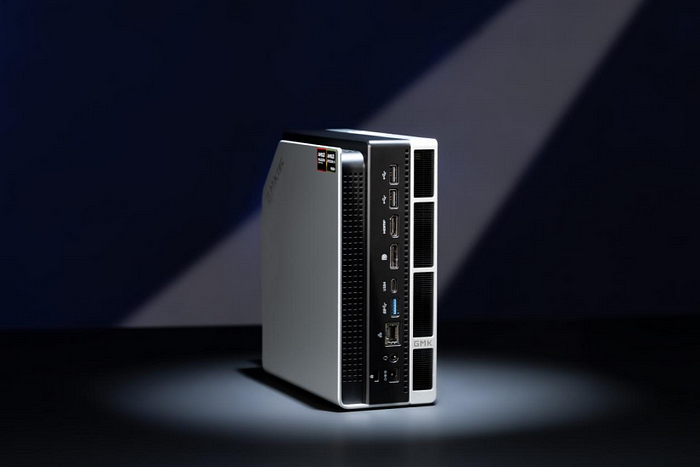
The front panel houses the power button, a performance mode switch, a card reader, two USB-A 3.2 Gen2 ports, and a 3.5 mm audio jack. The rear panel houses the power connector, a 2.5 Gigabit Ethernet port, a USB 4 port, a USB-A 3.2 Gen2 port, two USB-A 2.0 ports, as well as DisplayPort and HDMI ports. The EVO-X2 also supports state-of-the-art connectivity with Wi-Fi 7 and Bluetooth 5.4, covering all work and entertainment needs.
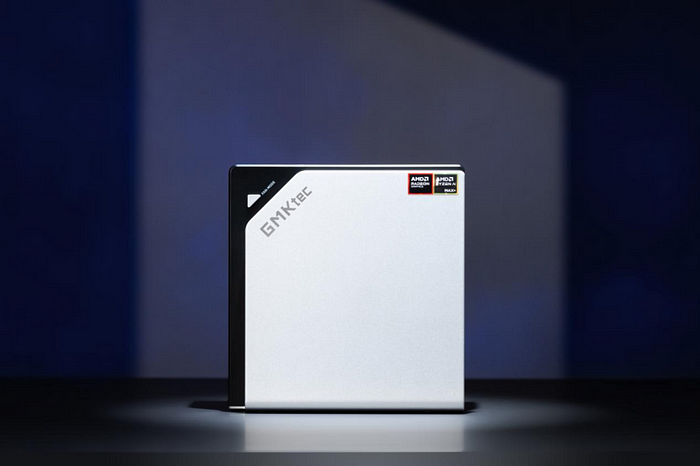
The EVO-X2's cooling system is based on the "Arctic Ocean" dual-fan design with three large heat pipes, two CPU fans, and one case fan. It ensures stable and quiet cooling even in high-load performance mode. Additionally, the case fan supports 13 different RGB lighting effects, which can be quickly switched via a button on the side of the case.
On the hardware side, the EVO-X2 is equipped with the powerful Ryzen AI MAX+ 395 processor and offers a maximum memory configuration of 128 GB LPDDR5X 8000 and a 2 TB PCIe 4.0 SSD — currently the best configuration for this chip.
Now let’s move on to the practical tests.
Practical test: All-rounder for gaming and AI applications
Before testing, we put the EVO-X2 into "Performance Boost" mode using the P-MODE button to ensure maximum performance. At the same time, we set the memory and graphics allocation to the factory default setup of 64 GB RAM + 64 GB VRAM.
Performance development and stress test
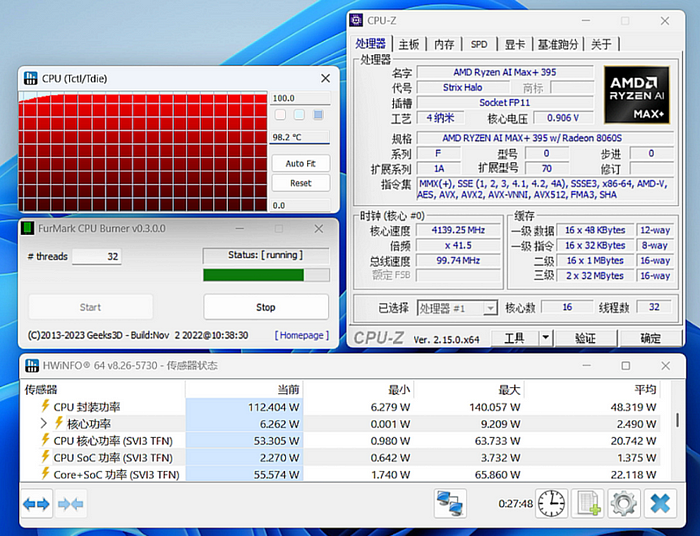
First, let's look at the power consumption of the Ryzen AI MAX+ 395 installed in the EVO-X2. At an ambient temperature of 28°C, the processor's peak power consumption reaches 140W in single-stress test mode, after which the power consumption stabilizes at around 120W. At this point, however, the processor temperature reaches the maximum limit of 98°C, which is why the power consumption drops to around 112W after half an hour of load.
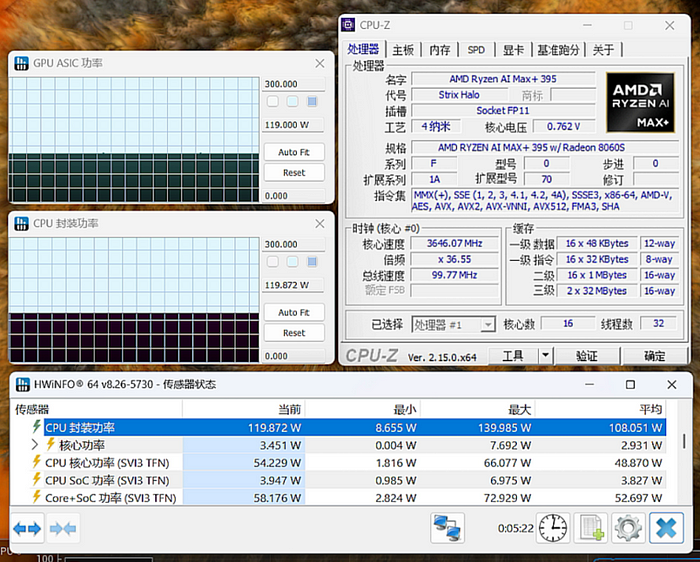
In dual stress test mode, the Ryzen AI MAX+ 395 also reaches a peak power consumption of 140 W, with the continuous power remaining stable at 120 W. The processor temperature remains constantly just above 80 °C, which is why there is no performance degradation even during longer stress tests. The reason for the lower temperature in the dual stress test is simple: Since the continuous power consumption is limited to 120 W, the power is split between the CPU and GPU. The CPU performance is therefore lower than in the individual test. The GPU is integrated into the significantly larger IOD area, whose cooling surface is much larger than that of the CCD chips, resulting in an overall lower processor temperature. This prevents the temperature limit from being exceeded, and performance throttling does not occur.
Overall, the EVO-X2's performance is very satisfactory. Keeping the Ryzen AI MAX+ 395's full 120W load below the temperature limit would require significantly increased fan speed, which would result in significantly higher noise levels. To preserve the user experience, the EVO-X2 doesn't offer a particularly loud "Turbo Cooling Mode," as some powerful notebooks with flagship processors do. Therefore, this performance-to-noise balance is perfectly normal and acceptable.
Benchmark and productivity performance tests
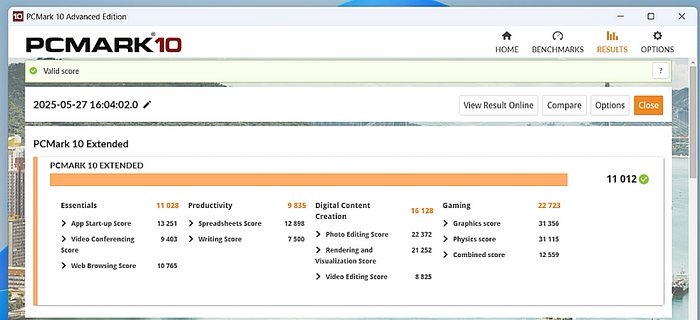
The EVO-X2 achieved a total score of 11,012 in PCMark 10, which is very close to the 12,000+ points achieved by high-end gaming laptops powered by Ryzen 9 9955HX and RTX 5070 Ti, thus representing a very strong performance. Of course, PCMark 10 doesn't fully leverage the massive 128GB of RAM; the test mainly reflects overall performance in regular office applications, content creation, and simple gaming.
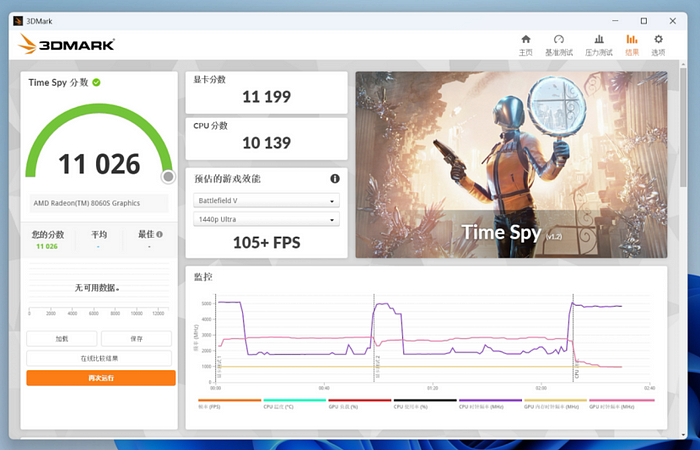
In the 3DMark Time Spy test, the EVO-X2 achieved a total score of 11,026, with the GPU score at 11,199—about 10% higher than the desktop version of the RTX 4060. The CPU score of 10,139 points, on par with leading desktop processors, however.
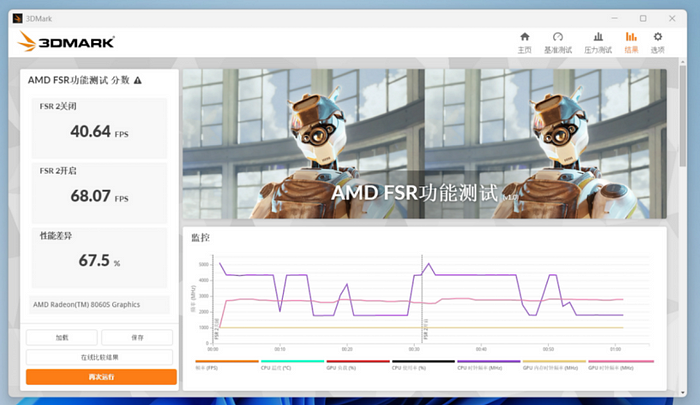
The Radeon 8060 integrated in the Ryzen AI MAX+ 395S In the 3DMark FSR test, the GPU achieved a 67.5% increase in frame rate to 68.07 fps at 2K resolution with FSR enabled. For gamers, this means that even demanding 2K games can be played smoothly thanks to FSR support—a previously unattainable milestone for an integrated graphics unit.
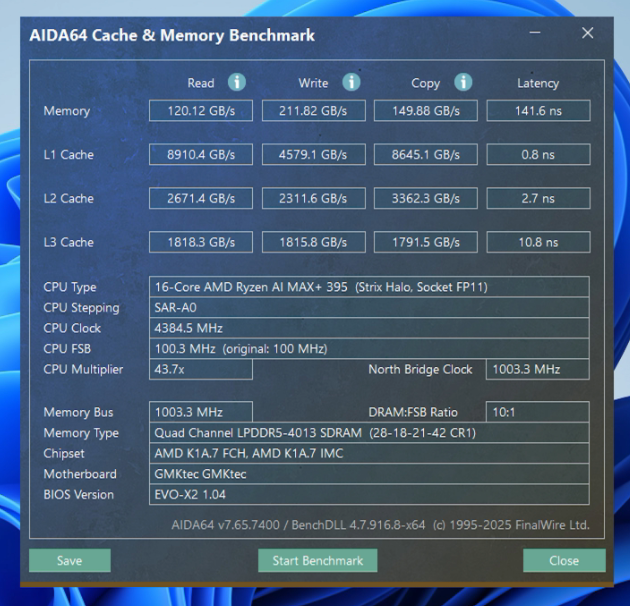
The EVO-X2 features 128 GB of unified LPDDR5X 8000 memory, whose performance in tests has been extremely impressive. Read bandwidth exceeds 120 GB/s, and write bandwidth exceeds 211 GB/s—significantly outperforming DDR5 8000 desktop variants. This powerful memory performance supports both the AI capabilities and the gaming performance of the integrated Radeon 8060.S enormous.
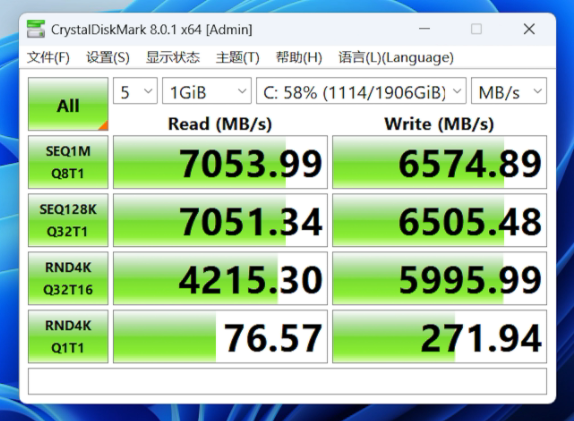
The EVO-X2 is equipped with a 2TB PCIe 4.0×4 SSD, whose measured performance is on par with top-of-the-line PCIe 4.0 SSDs.
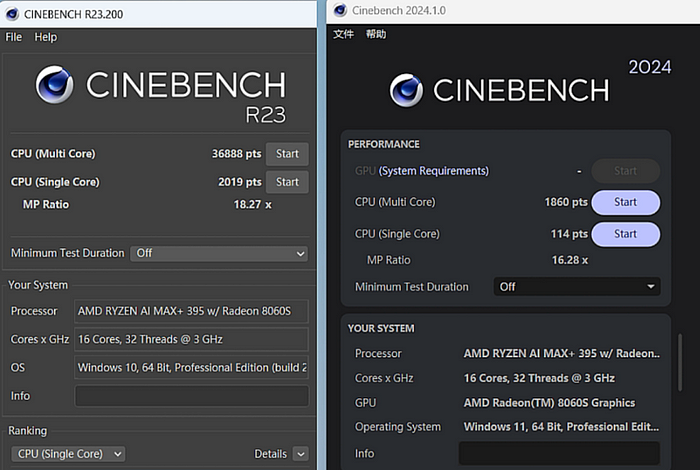
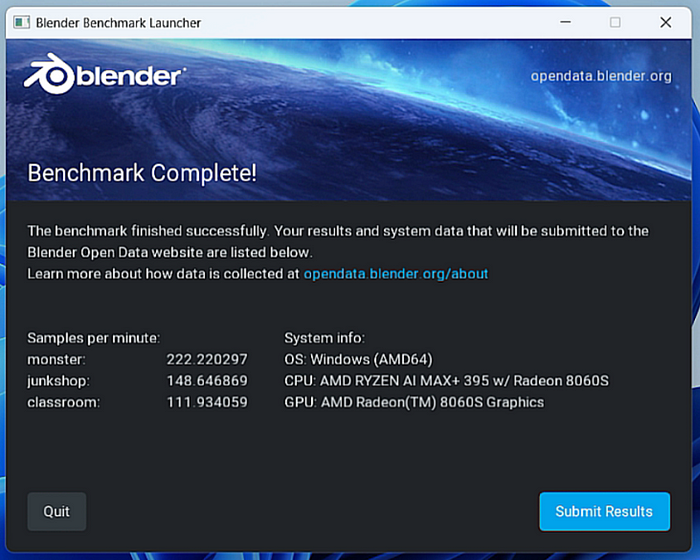
All three tested values reach top class.
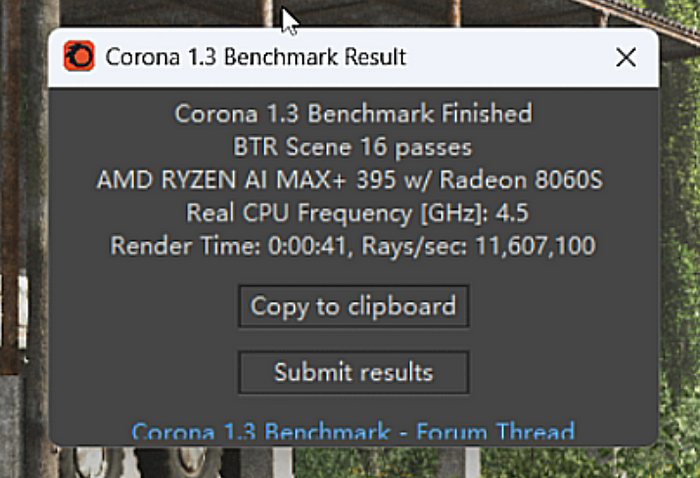
The results are very close to the Ryzen 9 9955HX.
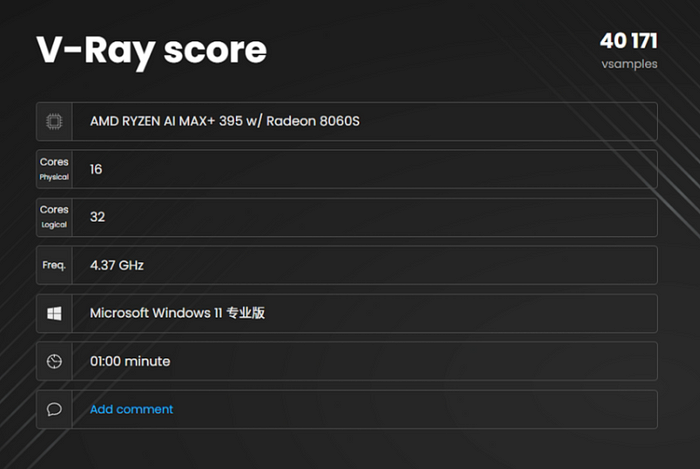
With an impressive score of 40171 points.
In pure CPU rendering tests with software such as Cinebench R23/2024, Blender, Corona, and V-Ray, the Ryzen AI MAX+ 395, with its 16 cores and 32 threads, demonstrates flagship-level performance. With a sustained power consumption of 120 W, it can compete with desktop flagships such as the Intel Core i9-14900K (with 253 W TDP), demonstrating impressive energy efficiency. This makes the Ryzen AI MAX+ 395 an extremely efficient work tool for professional designers.
Performance tests in the gaming sector

In the gaming tests, the FSR quality level was enabled for all games that support FSR, and this feature was also enabled for games with frame generation. The tests show that the integrated Radeon 8060S The Ryzen AI MAX+ 395 is undoubtedly the most powerful integrated graphics unit currently available. Its performance already surpasses that of the desktop RTX 4060 graphics card. With support for FSR and frame generation, most games achieve smooth frame rates of 100 or even several hundred frames per second. The maximum power consumption of the Ryzen AI MAX+ 395's CPU and GPU is just 120 watts, which is only slightly higher than the 115 watts of the desktop RTX 4060. The energy efficiency ratio is therefore truly impressive.
AI performance experience
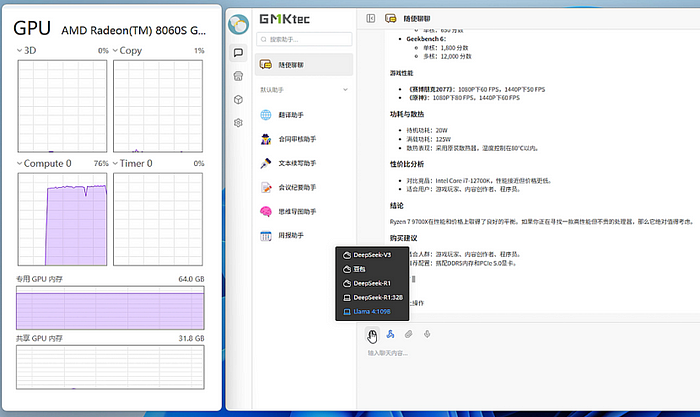
As an AI supercomputer desktop hub, the EVO-X2's greatest advantage is, of course, its ability to load and run extremely large AI models locally. Thanks to its massive 128GB of RAM, even the 109B model can be run with 64GB of VRAM allocated. We loaded the Llama 4 109B model with the pre-installed AI PC application and observed that the dedicated graphics memory occupied approximately 54GB. Even an RTX 5090 with 32GB of VRAM would reach its memory limits with such a model, whereas the Ryzen AI MAX+ 395 with 128GB of unified memory easily handles it. This is the unbeatable advantage of this AI PC platform.
We also tried having the AI create a test article outline. With the hardware acceleration of the Radeon 8060S The completion speed was very satisfactory. However, the pre-installed AI-PC application does not offer a performance display feature, so we decided to use LM Studio for further testing.
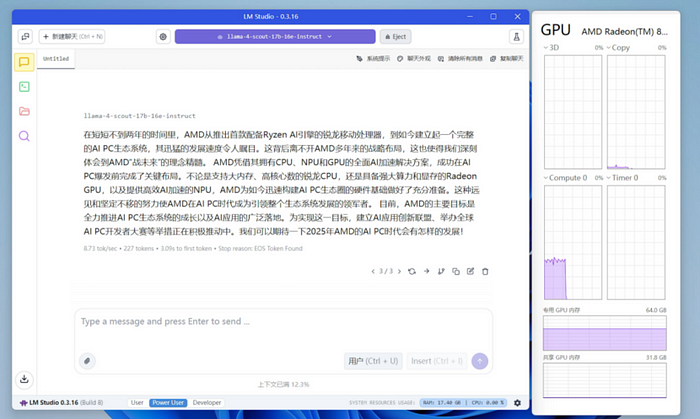
We loaded and ran the Llama-4-scout-17b-16e-instruct model with LM Studio. The model is approximately 53.83 GB in size and, after loading, used approximately 40.2 GB of graphics memory. Obviously, with an RTX 5090, the graphics memory on this model would also quickly reach its limits. We tested the AI by having it write an article. The test results show that the processing power of the Radeon 8060S at around 8.73 tok/s (227 tokens total), with a first token response time of 3.09 seconds—a thoroughly satisfactory experience. It's important to note that no matter how powerful a GPU is, once the model overloads the VRAM, the overall AI processing power drops significantly. Thanks to the 128 GB of unified memory and the Ryzen AI MAX+ 395 in the EVO-X2, this issue is clearly not present here.
Conclusion: An efficient tool that brings an AI supercomputer center to the desktop
In conclusion, the Ryzen AI MAX+ 395 has taken a new direction in the miniaturization of AI PCs, combining the performance of a desktop flagship processor with the superior Radeon 8060S It also boasts an iGPU that surpasses even many mainstream graphics cards. It also boasts an exceptionally large and powerful 128 GB of unified memory, which most consumer desktop platforms don't offer. This makes it an AI PC processor with no discernible weaknesses, especially when it comes to loading and executing extremely large local AI models—a strength that surpasses even high-end graphics cards.
Our tests show that the EVO-X2 with Ryzen AI MAX+ 395 easily meets the needs of mainstream gamers, designers, and AI users, making it an unbeatable choice for powerful mini PCs. Furthermore, the EVO-X2 impresses with excellent noise control and impressive RGB lighting effects that significantly enhance the user experience. Overall, the EVO-X2 is a powerful mini PC solution that easily fits on any desk and is considered an efficient AI tool—an outstanding example of the next generation of AI PCs.
